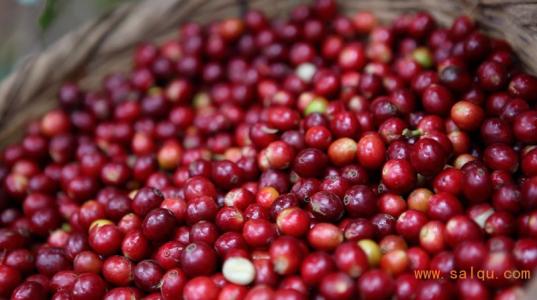The annual production of nearly 100,000 tons of Nicaraguan coffee producing area flavor treatment method planting environment manor simple
Brief introduction of planting Environment Manor by Flavor treatment in Coffee producing area of Nicaragua
Nicaragua has a low flavor, chocolate, caramel sweetness, obvious almond flavor and bright sour taste, which is different from the rising tone of bright fruit acid in Central America. Nicaragua's coffee planting ecology has a unique environment, all over the fertile volcanic soil, coupled with shade planting methods, has established a good growth physique
In the medium and deep baking degree, with a certain sweet, sour taste is not obvious, with a little chocolate and dried fruit taste, as the temperature decreases, the fruit acid can be felt, but it is still very mild. The taste is clean, but the mellowness and persistence in the mouth are lacking. It is suitable for people who don't like sour coffee, like balanced taste and sweet taste.
Unlike grapes, coffee cherries usually take three months to ripen. The harvest season in Nicaragua is from November to February, which is similar to the coffee harvest time in Yunnan.
Nicaragua is an economically backward agricultural country, is one of the poorest countries in Central America, the unemployment rate is very high, people live in poverty, and coffee is Nicaragua's pillar industry, producing nearly 100,000 tons of coffee beans every year. Due to the poor economic foundation, the coffee industry is still relatively backward, and coffee farmers are also in a relatively poor state.
Coffee production will be seriously affected. Nicaraguan coffee industry is no exception. The 1979 revolution forced coffee planters to flee to Miami. A period of indecision followed, when the government considered whether to redistribute land, including many plantations, which led to a shortage of coffee and a decline in production, from more than 1 million bags in the early 1970s to less than 600000 bags in 1990. Now the government has opened up the coffee industry.

Important Notice :
前街咖啡 FrontStreet Coffee has moved to new addredd:
FrontStreet Coffee Address: 315,Donghua East Road,GuangZhou
Tel:020 38364473
- Prev

The planting environment of coffee beans in Jinchu Valley, Kenya introduction to the grinding scale of the characteristics of the manor production area
The planting environment of coffee beans in Kam Chu Valley in Kenya the characteristics of the manor production area grinding scale introduces that Kenyan coffee is mostly grown at an altitude of 1500Murray 2100 meters and is harvested twice a year. Its main feature is a distinct fruit aroma, the common fruit aroma is citrus. Kenyan coffee has a multi-layered taste and the acidity of fruit juice, perfect grapefruit and wine flavor, moderate mellow.
- Next

The taste of Brazilian yellow bourbon coffee is better than that of red bourbon.
Brazilian yellow bourbon coffee taste which is better than red bourbon species, native to the Indian Ocean Bourbon Island (now known as Reunion Island), is the second species of Typica mutation, and Ironka belong to the oldest existing coffee varieties, the green fruit will show bright red when ripe, while the yellow bourbon species is a hybrid between bourbon species and other varieties. Because of its low output
Related
- Detailed explanation of Jadeite planting Land in Panamanian Jadeite Manor introduction to the grading system of Jadeite competitive bidding, Red bid, Green bid and Rose Summer
- Story of Coffee planting in Brenka region of Costa Rica Stonehenge Manor anaerobic heavy honey treatment of flavor mouth
- What's on the barrel of Blue Mountain Coffee beans?
- Can American coffee also pull flowers? How to use hot American style to pull out a good-looking pattern?
- Can you make a cold extract with coffee beans? What is the right proportion for cold-extracted coffee formula?
- Indonesian PWN Gold Mandrine Coffee Origin Features Flavor How to Chong? Mandolin coffee is American.
- A brief introduction to the flavor characteristics of Brazilian yellow bourbon coffee beans
- What is the effect of different water quality on the flavor of cold-extracted coffee? What kind of water is best for brewing coffee?
- Why do you think of Rose Summer whenever you mention Panamanian coffee?
- Introduction to the characteristics of authentic blue mountain coffee bean producing areas? What is the CIB Coffee Authority in Jamaica?

